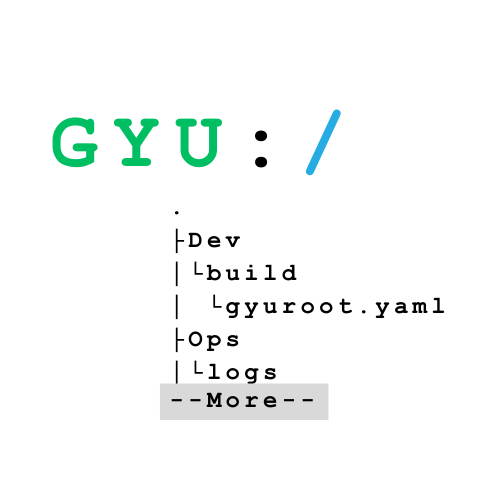⭐ HTTP 기반의 서버를 생성하는 소프트웨어인 nginx를 사용하여, 웹 서버(Web Server)를 생성하여 정적 웹페이지 호스팅을 따라 해보세요.
1. nginx 설치
$ sudo apt-get update
$ sudo apt-get install nginx
$ sudo nginx -v
nginx version: nginx/1.18.0 (Ubuntu)2. nginx.conf 파일 구조 확인하기
$ cat /etc/nginx/nginx.conf
###Core 모듈 설정 부분#
user www-data;
#Default: nobody
#작업자 프로세스에서 사용하는 자격 증명을 user정의 합니다.
#group생략 하면 group이름이 같은 그룹이 user사용됩니다.
worker_processes auto;
#Default: 1
#nginx의 실행가능한 worker 프로세스의 수를 지정해 줄 수 있습니다.
#nginx는 master와 worker프로세스로 구성되어 지는데요.
#공식문서에 의하면, 최적값은 cpu core에서부터 하드드라이브등
#여러가지 요소에 의해서 결정되어 지며,auto로 설정하면 자동으로 이 값을 찾아준다고 합니다.
pid /run/nginx.pid;
#nginx의 프로세스 아이디 (pid)가 저장되는 경로
include /etc/nginx/modules-enabled/*.conf;
#포함시킬 외부파일을 정의한다.
#위의 파일에 작성되어진 내용들을 현재 파일로 가져오는 것을 뜻
#error_log logs/error.log;
#nginx 의 에러 로그가 쌓이는 경로
#worker_rlimit_nofile 8192;
#Worker process들에서 최대로 열린 파일들의 수를 제한할 수 있습니다.
#이 수가 클수록 메인 프로세스를 재시작 할 필요가 없어진다고 합니다.
#대신 열려 있는 파일의 수만큼 서버에 부하가 발생
Events 블록##
events {
worker_connections 768;
#Worker Process가 동시에 처리할 수 있는 접속자의 수를 나타낸다.
#기본은 1024로 설정되어져 있다.
#worker_rlimit_nofile 의 숫자를 넘어서면 안됨
# multi_accept on;
#off로 되어있으면, worker프로세스는 한번에 하나의 커넥션만을 허용합니다.
#on으로 되어있다면, 모든 새로운 커넥션을 한번에 다 허용할 수 있습니다.
}
##http 블록##
http {
##
# Basic Settings
##
sendfile on;
tcp_nopush on;
types_hash_max_size 2048;
# server_tokens off;
# server_names_hash_bucket_size 64;
# server_name_in_redirect off;
include /etc/nginx/mime.types;
default_type application/octet-stream;
##
# SSL Settings
##
ssl_protocols TLSv1 TLSv1.1 TLSv1.2 TLSv1.3; # Dropping SSLv3, ref: POODLE
ssl_prefer_server_ciphers on;
##
# Logging Settings
##
access_log /var/log/nginx/access.log;
error_log /var/log/nginx/error.log;
##
# Gzip Settings
##
gzip on;
# gzip_vary on;
# gzip_proxied any;
# gzip_comp_level 6;
# gzip_buffers 16 8k;
# gzip_http_version 1.1;
# gzip_types text/plain text/css application/json application/javascript
#text/xml application/xml application/xml+rss text/javascript;
##
# Virtual Host Configs
##
include /etc/nginx/conf.d/*.conf;
include /etc/nginx/sites-enabled/*;
#upstream backend {
# server 127.0.0.1:3000;
# keepalive 32;
#}
#upstream 지시어는 upstream서버에 대해서 설정하기 위한 것인데요.
#인자로 설정할 upstream서버의 이름을 넣어주면 됩니다.
#서버들은 TCP이든 UNIX 도메인 소켓이든 모두 listen할 수 있습니다.
#아래에서는 backend라는 이름으로, 내부의 nodeJS의 3000포트 서버로
#연결시켜 주도록 하였네요.
#keepalive를 하는 이유는 proxy서버로부터, 다시 로컬의 nodejs서버로 연결될 때,
#접속이 다시 생성됨으로 인한 비효율을 막기 위해서 입니다.
}
##mail 블록##
#mail {
# # See sample authentication script at:
# # http://wiki.nginx.org/ImapAuthenticateWithApachePhpScript
#
# # auth_http localhost/auth.php;
# # pop3_capabilities "TOP" "USER";
# # imap_capabilities "IMAP4rev1" "UIDPLUS";
#
# server {
# listen localhost:110;
# protocol pop3;
# proxy on;
# }
#
# server {
# listen localhost:143;
# protocol imap;
# proxy on;
# }
#}
##server 블록##
#한 서버(한 개의 ip)에서 각각의 도메인에 따라서 서로 다른 페이지를 서비스할 수 있습니다.
#예를들어, 서로 다른 도메인 (minimilab-zzang.com과 minimilab.com) 을
#한 서버에서 서로 다른 페이지를 서비스 하도록 할 수 있습니다.
#minimilab-zzang.com 도메인으로 요청이 들어오면 /var/www/minimilab-zzang.com
#위치의 페이지를 서비스 하도록 하며,
#minimilab.com 도메인으로 요청이 들어오면 /var/www/minimilab.com
#위치에서 페이지를 서비스 합니다.
#server {
# server_name minimilab-zzang.com;
# root /var/www/minimilab-zzang.com
#}
#server {
# server_name minimilab.com
# root /var/www/minimilab.com
#
#location = /robots.txt {
# root /usr/static; //파일 경로
# try_files /robots.txt /robots.txt;
# }
#}
#location / {
# proxy_pass http://127.0.0.1/;
# proxy_redirect off;
#
# proxy_set_header Host $host;
# proxy_set_header X-Real-IP $remote_addr;
# # proxy_set_header X-Forwarded-For $proxy_add_x_forwarded_for;
# client_max_body_size 10m;
# client_body_buffer_size 128k;
# client_body_temp_path /var/nginx/client_body_temp;
# proxy_connect_timeout 90;
# proxy_send_timeout 90;
# proxy_read_timeout 90;
# proxy_send_lowat 12000;
# proxy_buffer_size 4k;
# proxy_buffers 4 32k;
# proxy_busy_buffers_size 64k;
# proxy_temp_file_write_size 64k;
# proxy_temp_path /var/nginx/proxy_temp;
# charset koi8-r;
3. Hands-On) 기본 샘플 페이지 테스트
# nginx web server 실행
$ sudo systemctl nginx starthttp://localhost 접속 확인

4. 기본(root) 페이지 위치 확인하기
$ cat /etc/nginx/sites-available/default
server {
## 사용할 port
listen 80 default_server;
listen [::]:80 default_server;
# SSL configuration
#
# listen 443 ssl default_server;
# listen [::]:443 ssl default_server;
#
# Note: You should disable gzip for SSL traffic.
# See: https://bugs.debian.org/773332
#
# Read up on ssl_ciphers to ensure a secure configuration.
# See: https://bugs.debian.org/765782
#
# Self signed certs generated by the ssl-cert package
# Don't use them in a production server!
#
# include snippets/snakeoil.conf;
## root page 위치
root /var/www/html;
# Add index.php to the list if you are using PHP
index index.html index.htm index.nginx-debian.html;
server_name _;
location / {
# First attempt to serve request as file, then
# as directory, then fall back to displaying a 404.
try_files $uri $uri/ =404;
}
# pass PHP scripts to FastCGI server
#
#location ~ .php$ {
# include snippets/fastcgi-php.conf;
#
# # With php-fpm (or other unix sockets):
# fastcgi_pass unix:/run/php/php7.4-fpm.sock;
# # With php-cgi (or other tcp sockets):
# fastcgi_pass 127.0.0.1:9000;
#}
# deny access to .htaccess files, if Apache's document root
# concurs with nginx's one
#
#location ~ /.ht {
# deny all;
#}
}5. Hands-On) 새로운 웹 페이지 호스팅하기
새로운 HTML 파일 생성
/home/oh/codeStates/nginxHandsOn/index.html
<!DOCTYPE html>
<html>
<head>
<title>My Awesome Web</title>
</head>
<body>
<h1>Hello World</h1>
<p>This is for Codestates DevOps Bootcamp!</p>
</body>
</html>nginx.conf 파일의 Server 블록 수정
server {
listen 10024;
server_name localhost;
location / {
root /home/oh/codeStates/nginxHandsOn;
index index.html;
}
}새로운 웹 페이지 확인하기

